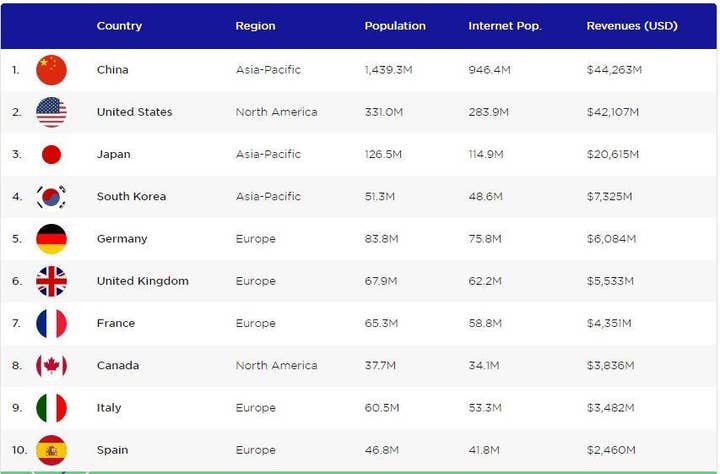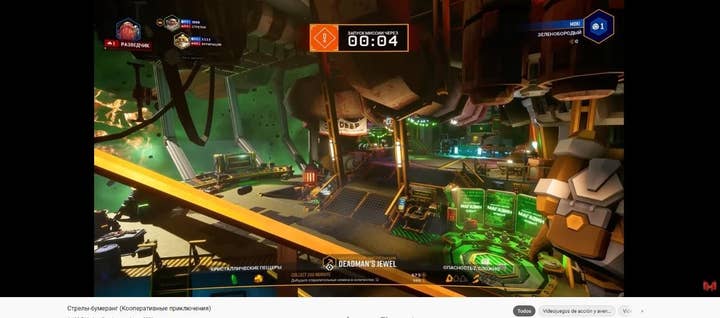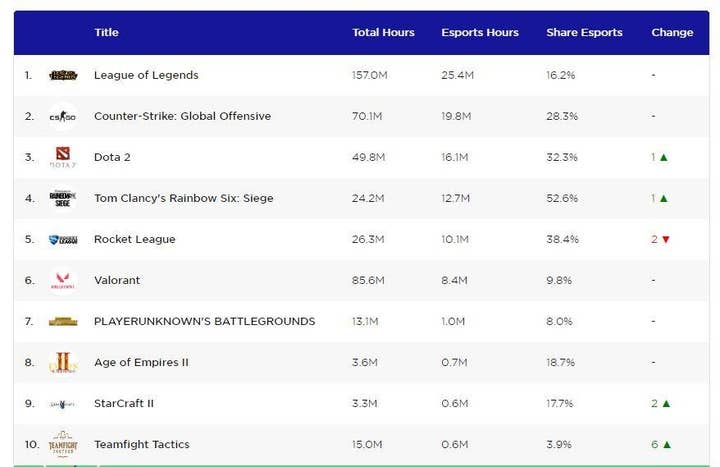Five reasons why game localization matters
Keywords' Yago Sagrado explores the many reasons why developers and publishers should consider localizing their games into more languages
Localization is everywhere. That is because the public can only enjoy entertainment products if they are able to understand them.
You cannot enjoy movie if you do not understand what the characters are saying or read a book if you do not understand the language, right?
The same applies to video games: titles have a much better chance of success in multiple markets when they are localized and adapted to them. This may appear obvious but often we don't think about why this is the case.
This article details five reasons why localization matters based on statistical data, with practical examples to understand its power and how it can be used by video games developers and publishers to achieve their goals.
1. Make your game relevant
The first reason why localization truly matters may seem obvious but that does not make it any less significant: if we cannot understand something, it may as well not exist.
Boiled down to its simplest implication, if a game is not understandable for a player, it has no relevance for them. The game that players would enjoy and invest time and money in is completely unknown to them.
If we cannot understand something, it may as well not exist
You may have spent thousands of hours on development and promotion to create a compelling experience to be loved by many but it will have all been for nothing if the audience cannot get past the title menu.
In essence, this is what localization solves for; much more than just translating content. It makes that content exist for the target audience. It makes it relevant to them.
Currently, most Western companies will develop their game in English to reach the maximum number of potential players from the start. This means they still think of localization as 'English to other language' which, as we will see, is far from being the only way to go.
But let's focus on this pair for now. Of the approximate 7.8 billion people in the world, 1.35 billion speak English, although only 360 million of them are native English speakers.
When playing the English language versions of games, those non-native speakers who are not proficient enough might see their experience hindered. This has been shown to reflect in their perception and reviews.
Even if they were native English speakers, not localizing a title created in this language would mean it would only be comprehensible by a minority of the world's population, leaving the majority outside your scope.

But of course, English is not the only language games are developed in. It is not even the language most people play games in.
As of 2020, China ranked first among the biggest gaming markets worldwide, with a global revenue of $40.85 billion. In comparison, the market in the United States ranked second, generating an approximate $36.92 billion in annual revenues.
Any developer neglecting to appropriately localize their game into Chinese, will be missing out on the chance to obtain revenue in the world's biggest market.
[Most Western companies] still think of localization as 'English to other language' which, as we will see, is far from being the only way to go
Of course, for Chinese developers, the same applies and focusing on the domestic market only will make the product invisible to millions of potential players outside China.
The examples mentioned before are so paradigmatic not only because of the size of the markets, but also the very patent differences in language.
Not sharing alphabet may make it seem like these two languages have a wider gap to bridge between them. The truth is that to a French speaker, for example, English or any other language can be exactly as foreign and impenetrable if they have not learnt it before. They may recognize the letters if they share the alphabet but have no clue what they mean either way.
Obviously, no one can localize into every single language that exists.
Take a game that has been developed in English: localization into four target languages would pave the way to access the five biggest markets per revenue (China, Japan, South Korea, Germany). Four more languages and you would cover the entire list of the 10 biggest markets per revenue, making a game relevant to more than a billion potential players.
2. Improve user reviews
So, we have established that localization makes games content relevant for target audiences. Once that is achieved and players pick up the game, you obviously want them to spend time playing and, ultimately, investing money in it.
The obvious driving force that will keep them returning to a title is if they have fun while playing it. Measuring "fun" is not an easy task but we do have a useful tool to track user satisfaction directly from their own experience: user reviews. So, the question is, can localization affect how users review a title?
The answer is yes, it does.
One study analyzed thousands of user reviews in different stores and platforms and found out that roughly 16% percent of them mentioned localization in one way or another.
Most interesting is the correlation between how good or bad those players perceive the game -- or how much they would recommend the game to others -- and the presence of a good/bad localization, or none at all.
The finding is that more than 80% of reviews with positive localization feedback were also very positive overall.
Players mentioning localization give a slightly worse rating to games with bad localization than those that request having the game in their language
When presented with quality localization, players tend to give higher ratings to games, thus positioning it higher in the charts or making it easier to earn the coveted "Overwhelmingly Positive" badge on Steam, paving the way for other players to decide to play the title based on other people's reviews.
Speaking of Steam, discovery in the platform is one of the best promotion tools any company has for their title and, as seen in this recent article by Simon Carless, to make it into the store as a default game for a player in China, you need to localize into Chinese.
This will put the title in a "different store view" with much less competition, which is an incredible opportunity.
On the other hand, in the absence of localization, players can reduce the overall rating by up to 25% while requesting to have the game in their language. These reviews come from the frustration of players that have tried, and maybe enjoyed the game, but know they would enjoy it much more if it were in their mother tongue.
One could deduce that these players would spend more time and money and leave a better review if they did not feel this frustration.

Finally, it is worth noting not all localization efforts will do. In fact, players mentioning localization give a slightly worse rating to games with bad localization than those that request having the game in their language.
The latter expresses a wish for a game they already enjoy but it seems that bad localization hinders the experience in an even more tangible way.
The lack of professional review or text coming from bad machine translation engines without proper post editing are sure ways to obtain a poor localization that will drive reviews downwards.
3. Engage communities
We saw how localization is an essential tool to put your game on the radar of millions of players and how good localization can be decisive in improving user reviews.
But once you have the players' attention and they have enjoyed your game, can localization help to keep them coming back? Absolutely.
Story-driven single player games are usually bought once but other models, from games-as-a-service to hypercasual mobile titles, rely heavily on two pillars to keep players engaged and active:
- New content streams: Players will not be replaying the same content for too long, so providing a steady flow of new maps, characters, gameplay mechanics is essential.
- Curated events and promotions: Those periods in between content releases need to be filled with items that retain attention, special events or tasks with rewards that keep players engaged.
Localization shines the most [when] you need to capture the essence of a culture and communicate so that player bases perceive you as part of their culture
Those events and promotions need to be aimed at specific audiences. The players could well be active only in a region to celebrate a local festivity but to truly engage with those specific audiences, you need to speak them in their language, using their codes.
The principle of localization shines the most in these circumstances, where you need to capture the essence of a culture and communicate so that player bases perceive you as part of their culture.
It will never be the same to offer a 20% discount to celebrate Rio's carnival in a game that is not even translated into Portuguese, than making that same promotion with your game localized, maybe even using puns or local slang to better capture the positive sentiments of those players.
4. Leverage the power of local influencers
Another great way to engage specific communities is to leverage the influencers and thought leaders in that specific region. Although there are a few big names that appeal to the global audience, most of the time the ecosystem is populated by local stars.
If you look at the biggest names of some countries, it is easy to see they prefer localized games that they know their audiences can follow while watching, not to mention the fact that they may not even speak the original language the game was developed themselves.
Failing to get streaming time from these influencers means you could be missing out on millions worth of free publicity for your title.
An example of a very popular streamer and their power is Marmok, Russia's No.1 gaming Youtuber with 15.6 million subscribers on Youtube. Marmok's videos are all in Russian and playing games translated into Russian (see screenshot below). A game not localized into that language will probably fall outside his and, most importantly, his followers' radars.
With a market revenue estimated to reach $2,747 million in 2021 and one of the lowest English proficiencies in all Europe in Russia, it is clear why engaging high profile influencers, like Marmok, and their public will surely only happen through localization.
The Russian market is especially attractive for free-to-play games, as these accounted for 47% of the overall turnover in 2020 (for comparison, on average in Europe, this share is much less, 20%.)

Over in Brazil, YoDa is the No.1 gaming streamer, with 2.1 million followers on Twitch and 11 million hours watched. This young streamer is another great example of a profile with penetration in just one area of the world but with extreme influencing power thanks to a massive local follower base.
Again, by watching his streams you can clearly see he favours games localized into Brazilian Portuguese, so chances to land a spot on his streams probably will only come if you decide to make the game accessible to him and his audience.
According to the latest data by Newzoo, the battle royale genre is the main driving force of the Brazilian market, which in global terms is estimated to see $2.3 billion in revenue in 2021.
Brazil is a booming market for games with an audience with a low English proficiency, so localization and its power to attract influencers and the general audience is key to successfully land in the region.

These are just examples, but we could mention hundreds of similar ones in areas with emerging markets such as the Asia Pacific Region or other Latin American countries.
5. Achieve a wider reach
One thing is certain: whenever a title is well-received by the public, localization ensues. If it had none before, it receives it, and if it did have some, it gets expanded.
We see from indie devs when they hit the spot with a game as well as with the bigger AAA players. This trend applies to every type of game, but it is particularly visible in those that require active communities and a steady following, such as esports.
The popularity and global reach of these can be measured by the number of hours watched on streaming platforms. Below you have a table of the 10 most watched esports on Twitch during April 2021, according to Newzoo. Looking into it, it can clearly be seen how a successful competitive game always has a significant localization effort attached.
One by one, these are the languages the first five are localized into (excluding English):
- League of Legends: Text and audio localization into 14 languages
- CS:GO: Text localization into 28 different languages
- Dota 2: Text localization into 28 different languages
- Rainbow Six: Siege: Text and audio localization into seven languages and only text into an additional 8. Total of 15 languages
- Rocket League: Text localization into 12 languages

But this relationship between localization and popularity is not only seen in esports. Look at other major players in the industry such as King, who provides support into more than 20 languages, or think of the massive success of miHoYo's Genshin Impact. It wouldn't have been possible outside its native China without text localization into 12 languages and voice-over into three apart from Chinese.
All the big names and indie hits are trusting localization to expand their reach and keep their games engaging for players around the world. Anyone wanting to mimic their success might as well follow their lead.
Yago Sagrado is communications manager at Keywords Studios. He has developed a career in the gaming localization industry from the ground up, starting as a localization tester for EA before moving on to production roles as audio project manager for Keywords Studios.